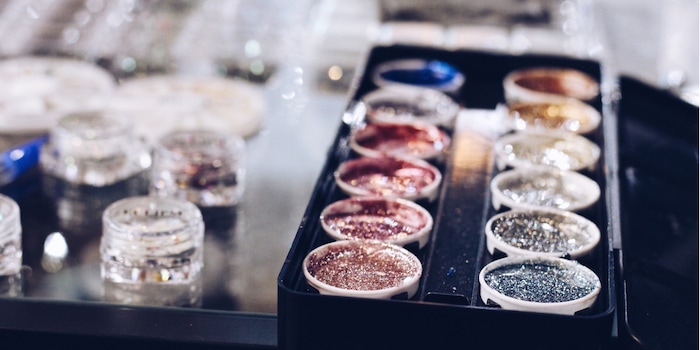
Eco-glitter is as harmful to the environment as normal glitter
Microplastics in cosmetics are now frowned upon. However, even "green" alternatives do not fulfil their promises, as they pollute lakes and rivers in equal measure.
Supposedly biodegradable glitter particles in cosmetics appear to be just as harmful to water bodies as the corresponding material made from conventional plastics. This is the conclusion of a study by Dannielle Green from Anglia Ruskin University and her team in the "Journal of Hazardous Materials". The scientists compared glitter made from PET with an alternative made from cellulose, which is still encased in a thin layer of aluminium and plastic like the PET beads: so-called "modified regenerated cellulose" (MRC), which is still considered to be a more environmentally friendly alternative.
However, the analysis disproves such an assumption: in the experiment, both variants did not affect the pure species count. However, the glitter significantly reduced the chlorophyll content of the water as an indirect indicator of the algae concentration. It was three times lower than in the control experiments without microplastics. The phytoplankton therefore decreased massively in both the PET and the MRC. In addition, both reduced the root growth of the duckweed (Lemna minor), which in turn could limit its vitality.
The only difference between the two materials was the effect on the mud snail Potamopyrgus antipodarum, which was introduced to the UK from New Zealand. Their population doubled after 36 days during the experiment when MRC was added to the water. The species feeds on organic waste in the water and therefore appears to benefit from an increased supply of cellulose. Whether this causes ecological damage to native snail species has not yet been clarified by the work.
In addition to glitter and microplastics, which are described as biodegradable despite their plastic and aluminium coating, there are now also variants of shower gels and scrubs that are based purely on cellulose. However, these often have a weaker cleansing effect than plastic particles. At least one toothpaste with beechwood cellulose particles developed by the Fraunhofer Institute performed well when tested.
Spectrum of science
We are partners of Spektrum der Wissenschaft and want to make well-founded information more accessible to you. Follow Spektrum der Wissenschaft if you like the articles.
[[small:]]
Experts from science and research report on the latest findings in their fields – competent, authentic and comprehensible.